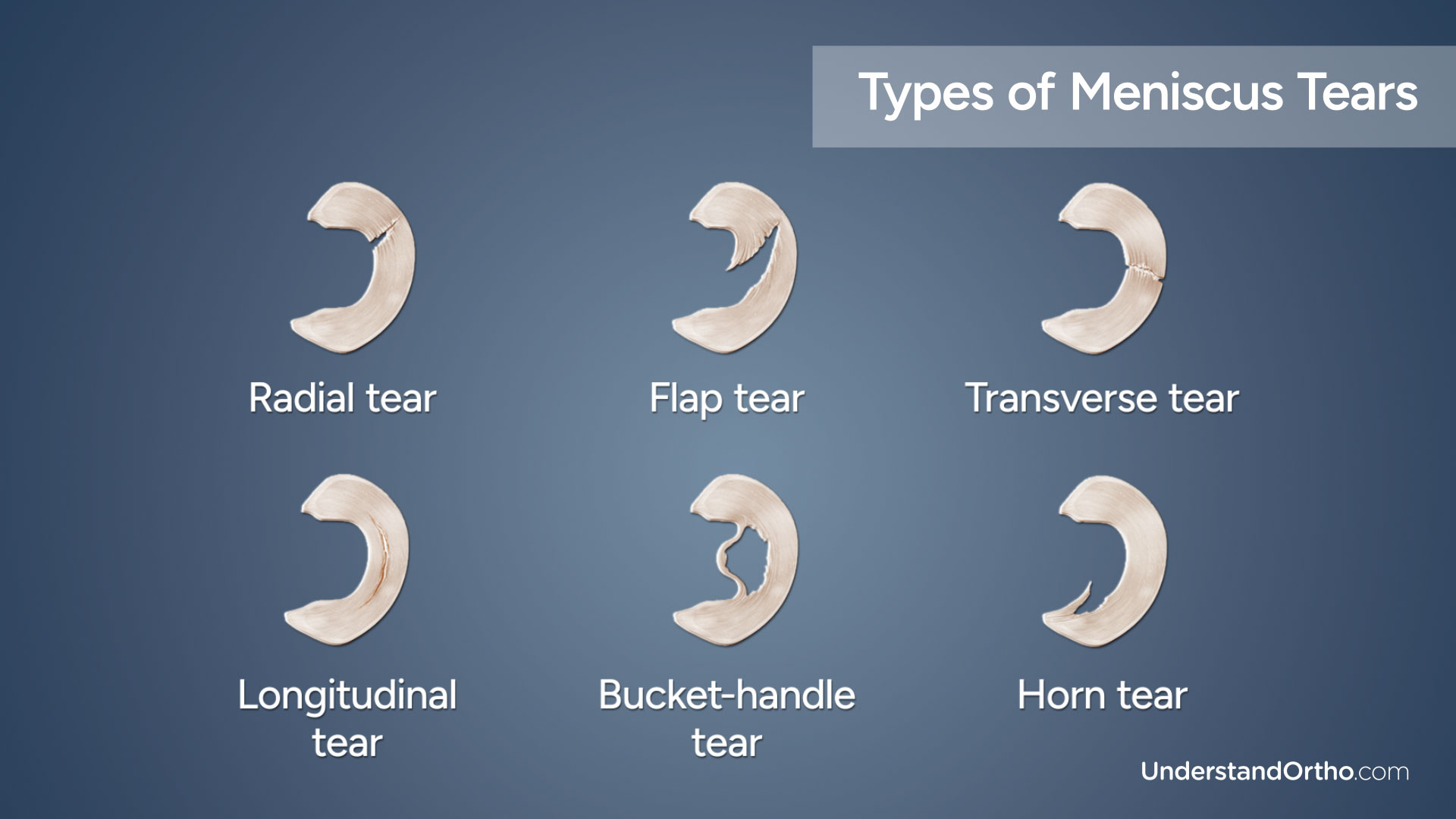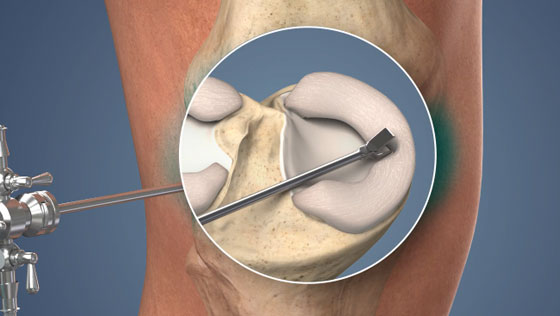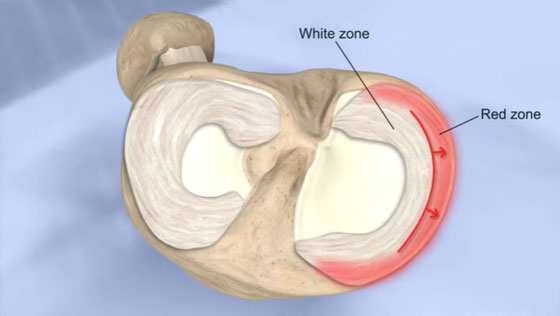What is a Meniscus Transplant?
Meniscus transplant (also known as meniscus replacement or meniscal allograft transplantation) is a surgical procedure that is typically performed arthroscopically in order to replace damaged or missing meniscus cartilage with that of a cadaver donor (called an allograft).
Key statistics about Meniscus Transplant
- Meniscus transplant patients reported significantly improved pain and mechanical knee function up to 15 years following meniscus transplant surgery[1]
- Up to 76% of meniscus transplants survive 10 years[1]
- 16% of women aged 50-59 years have degenerative meniscus tears[2]
- More than 50% of men aged 70-90 years have degenerative meniscus tears[2]
Expert Insight
Understanding Meniscus Transplants - Daniel Cooper, MD
Knee Anatomy
The knee joint is formed by three bones: the femur (thigh bone), the tibia (shin bone), and the patella (kneecap).
The menisci are two crescent-shaped pieces of cartilage positioned on either side of the knee, between the tibia and femur, while articular cartilage covers the ends of the bones. The medial meniscus and lateral meniscus work together with articular cartilage to absorb shock, disperse weight, and reduce friction as the knee moves.

What are Meniscus Tears?
Meniscus tears are some of the most commonly-occurring knee injuries. There are two primary categories of meniscus tears:
- Traumatic tears: acute tears that are the result of traumatic injury typically involving pivoting or twisting of the knee, and commonly occur in athletes
- Degenerative tears: chronic tears that are often a normal consequence of aging and commonly occur in older individuals
Meniscal tears occur in a variety of patterns such as: radial tears, flap tears, transverse tears, longitudinal tears, bucket-handle tears, and horn tears.

Meniscal tears can cause pain, swelling, instability, and reduce the range of motion of the knee. Left untreated, meniscal tears can worsen and eventually lead to osteoarthritis in the affected knee.
Why is Meniscus Transplant performed?
There are a variety of techniques used to address meniscus tears including nonsurgical options, meniscus trimming, meniscus repair, and meniscus removal (meniscectomy) and transplant. The age of the patient and the location and type of tear will determine which technique will be used to address the injury.
Typically, meniscectomy and meniscus transplant are performed to address meniscal tears that cannot be repaired and that are degenerative in nature.
Who needs Meniscus Transplant?
Meniscus transplant is an option in individuals who:
- Are experiencing significant pain as a result of missing a substantial portion of the meniscus due to damage or removal
- Do not have arthritis or damage to the articular cartilage
- Do not have knee alignment problems or ligament instability
- Are physically active and wish to remain so
- Are not obese
What is a Meniscal Allograft?
The meniscal allograft is an intact, healthy meniscus taken from a human cadaver donor. The allograft is screened for infectious disease and imaging is taken to ensure that the patient’s meniscus and that of the donor are similar in size.
How is Meniscus Transplant performed?
- The surgeon will make small incisions around the knee joint and an arthroscope will be inserted into one of the incisions.
- Saline solution is pumped into the joint to expand it and improve visualization.
- Images from the arthroscope are sent to a video monitor where the surgeon can see inside the joint.
- Any remaining meniscus is removed.
- The donor meniscus is surgically affixed to the tibia using one of a variety of techniques.
- Finally, the saline solution is drained, instruments are removed, and the incisions are closed using sutures.
What are the risks of Meniscus Transplant?
Risks associated with meniscus transplant may include:
- Infection
- Blood clots
- Nerve or blood vessel damage
- Knee stiffness
How long does it take to recover from Meniscus Transplant?
-
24 hours after surgery
Pain medication will be prescribed. -
1-3 days after surgery
Most patients are discharged from the hospital and given crutches to prevent weight-bearing on the affected leg. A physical therapy routine will be established by the surgeon and physical therapist. -
4-6 weeks after surgery
Most patients can discontinue using the knee brace and crutches and walk with full weight on the affected leg. Most patients can resume driving and daily activities. -
6-12 months after surgery
Most patients are fully recovered from meniscus transplant and can return to sports and strenuous activities.
What are the results of Meniscus Transplant?
The objective of torn meniscus transplant is to alleviate knee pain and restore knee function in patients who have significant meniscus loss or damage. For patients who meet eligibility criteria for meniscus transplant, the surgery can provide significant improvement in knee function and persistent pain.
Find an Orthopedic Doctor in Your Area




